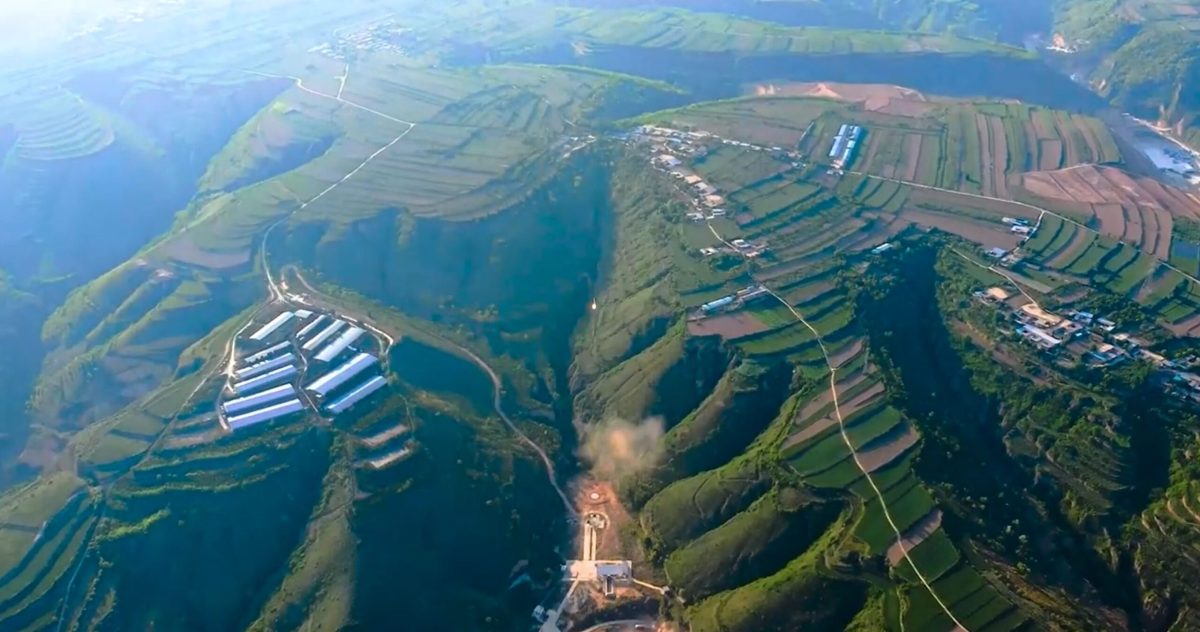HELSINKI — Chinese commercial rocket firm Deep Blue Aerospace announced new funding Tuesday, with a 100-kilometer-level launch and landing test scheduled for later this month.
Deep Blue Aerospace announced the successful completion of its B3 strategic financing round Aug. 13 without disclosing the amount of funds raised. It follows a number of funding rounds secured this year by the company.
The new round was led by Zhengyue Investment, a strategic investment firm focused on high-growth sectors, and Zhenghe Yunfan Fund, a private equity fund particularly active in industries such as defense technology and advanced manufacturing.
Both funds are examples of how private equity and venture capital in China are increasingly aligned with national priorities, such as technological advancement and industrial modernization. China’s central government last year designated commercial space as an important future industry.
Xiamen City and its Jimei District also participated in the round. Deep Blue Aerospace plans to expand its operations in Xiamen to include commercial rocket education, supply chain support, and aerospace electronics manufacturing and testing. The development is another example of strong local government support for commercial space in China.
Deep Blue Aerospace says it will use the funding to focus even more on breakthroughs in core technologies and the commercialization of its “Nebula” series of reusable rockets.
VTVL test imminent
The firm is aiming to become the first Chinese company to launch and safely land a rocket first stage from an orbital launch with Nebula-1.
To this end, Deep Blue Aerospace aims to conduct a 100-kilometer-level vertical takeoff, vertical landing (VTVL) test with a Nebula-1 first stage before the end of August. This will effectively test a full duration full stage flight and use a flight product rather than prototype. The company notably performed a Chinese first with a successful kilometer-level VTVL test with a test article in May 2022.
The company will then work towards an orbital flight of the kerosene-liquid oxygen Nebula-1 rocket. Deep Blue Aerospace earlier this year stated its aim of conducting the first orbital flight before the end of 2024. However, this timeline was not explicitly stated in the Aug. 13 funding announcement.
The Nebula-1 is a two-stage, 3.35-meter-diameter launcher. The kerosene-liquid oxygen-fueled rocket will use nine variable thrust, 3D-printed Thunder-R1 engines on its first stage, and a single engine on the second. It will be capable of carrying 2,000 kilograms to low Earth orbit (LEO). Alternatively it can launch 1,000 kg to 500 km sun-synchronous orbit (SSO).
An improved version will be able to lift 8,000 kilograms to LEO, according to the company. This greater capacity would allow the company to compete for launches of batches of satellites for the country’s planned megaconstellations: Guowang, Thousand Sails/G60 and Honghu-3. China appears set to foster and leverage its growing commercial launch capabilities to facilitate the growth in launch rates to construct these constellations.
Overall the firm aims to provide frequent, low-cost commercial space launches, and advance the commercialization of space transportation in China.
Deep Blue Aerospace has received a flurry of funding this year. It announced in May the closing of B and B1 funding rounds which raised hundreds of millions of yuan (tens of millions of dollars). It then announced a B2 round in late July.
The latter was led by Wuxi High-tech Zone Investment. DBA is establishing an Intelligent Manufacturing and Assembly Base in that zone within Wuxi City.
Deep Blue Aerospace is one of a growing number of commercial and state-linked firms developing reusable rockets. These companies have identified China’s megaconstellations as sources of contracts that could sustain them. A series of hop tests and expendable test launches and reusable orbital launches are expected in the next year and beyond.
Chinese commercial launch service providers have expressed interest in attracting international customers. These efforts likely face challenges including regulatory and geopolitical barriers, such as the International Traffic in Arms Regulations (ITAR) in the United States, as well as the dominance of SpaceX and other, emerging companies.
CompanyRocket NameRocket TypeKey Features/NotesiSpaceHyperbola-3Methane-liquid oxygenPayload capacity of 8,500 kg to Low Earth Orbit (LEO); first flight planned for 2025.LandspaceZhuque-3MethaloxPayload capacity up to 21,000 kg to LEO. Stainless steel. first flight planned for 2025.Galactic EnergyPallas-1Kerosene-liquid oxygenPayload capacity of 5,000 kg to LEO, or 3,000 kg to a 700 km sun-synchronous orbit (SSO).CAS SpaceKinetica 2KeroloxPayload capacity of 7,800 kg to 500 km SSO.Deep Blue AerospaceNebula-1KeroloxPayload capacity of 1,000 kg to 500 km SSO; 2,000 kg to LEO. First flight planned in late 2024.Space PioneerTianlong-3KeroloxComparable to Falcon 9 in launch capability; plans for a reusable first stage.Space EpochXZY-1Methalox7,000 kg to 1,100 km. Stainless steel. First flight in 2025.OrienspaceGravity-2Kerolox25,600 kg to LEO. First flight in 2025; plans for a reusable first stage.CASCVariousVariousWorking on reusable rockets including a new-generation human-rated launcher, spaceplane, and Long March 9 super heavy-lift launcher.Non-exhaustive list of planned Chinese reusable rockets (Credit: Andrew Jones/SpaceNews).
